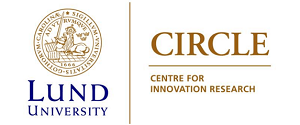No 2010/6: A three-stage model of the Academy-Industry linking process: the perspective of both agents
Claudia De Fuentes () and Gabriela Dutrénit ()
Additional contact information
Claudia De Fuentes: CIRCLE, Lund University, Postal: PO Box 117, Sölvegatan 16, SE-22100 Lund, Sweden
Gabriela Dutrénit: Universidad Autónoma Metropolitana-Xochimilco, Postal: Calzada del Hueso 1100, col. Villa Quietud Coyoacán, CP 04960, Mexico
Abstract: Interactions between public research organizations and industry can be conceptualized in three main stages: the engagement in collaboration, the knowledge transfer during collaboration, and the benefits perceived from collaboration. Both agents differ in terms of the incentives to collaborate and the behaviors they adopt along these three stages. Following a three stages model based on Crépon, Duguet and Mairesse (1998), this paper discusses the impact of drivers to collaborate on channels of interaction, and the impact of channels of interaction on benefits for both agents -researchers and firms, and discusses the policy implications. The study is based on original data collected by two surveys carried out in Mexico during 2008, to R&D and product development managers of firms and to academic researchers. Our results show different perceptions from both agents across the three stages of the linking process; the main drivers for firms’ collaboration are largely related to behavioral characteristics (formalization of R&D activities, fiscal incentives for R&D and openness strategy), while for researchers they are associated with individual (academic degree, members of a team, type of research -basic science and technology development) and institutional factors (affiliation to public research centres. All channels of interaction play an important role in determining benefits for researchers and firms; however, R&D projects & consultancy channel play a particular important role for long-term benefits, while the information & training channel is particularly important for short-term benefits. Usually policies do not discriminate much between agents’ perception at each stage of the linking process and introduce general programs that look for stimulating interaction by both agents; this unique incentive to promote interaction will probably fail to change agents’ behavior. Thus, a better understanding of the different perspectives will contribute to more efficient policy programs.
Keywords: university-industry interactions; collaboration drivers; channels of interaction; benefits; innovation policy; developing countries; Mexico
JEL-codes: O30
35 pages, October 1, 2010
Full text files
201006_De_Fuentes_Dutrenit.pdf
Questions (including download problems) about the papers in this series should be directed to Torben Schubert ()
Report other problems with accessing this service to Sune Karlsson ().
RePEc:hhs:lucirc:2010_006This page generated on 2024-09-13 22:16:04.

